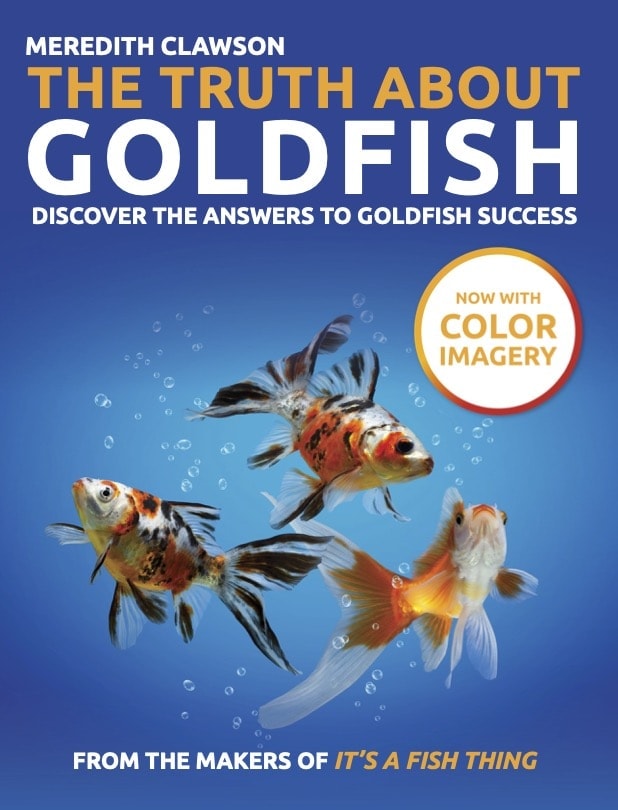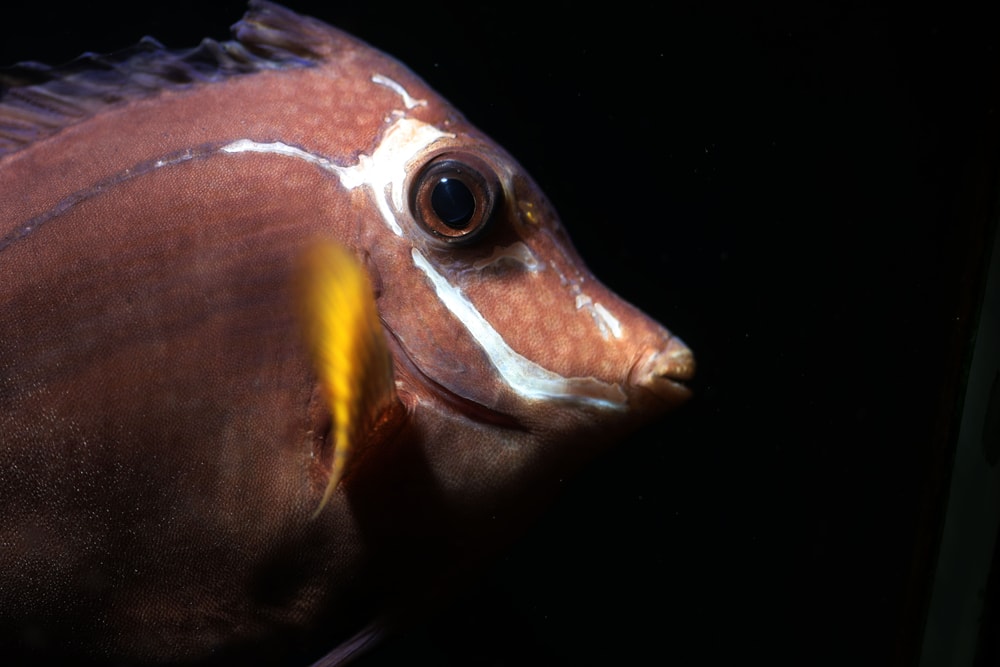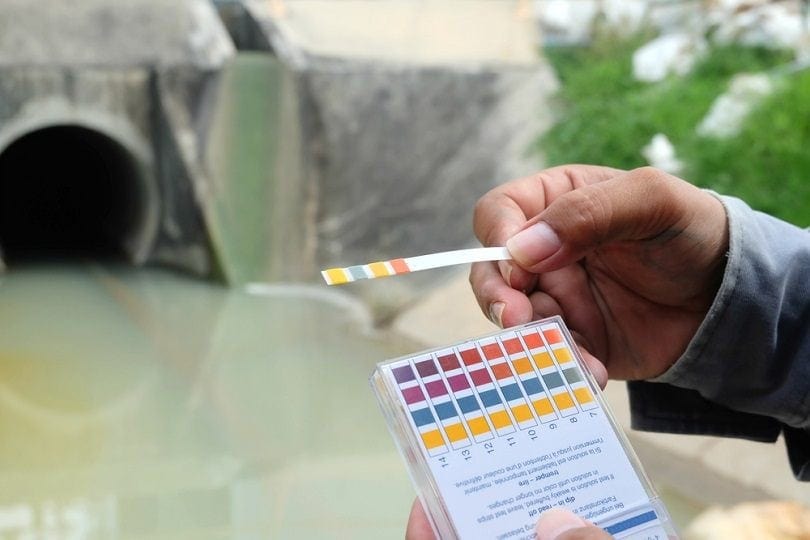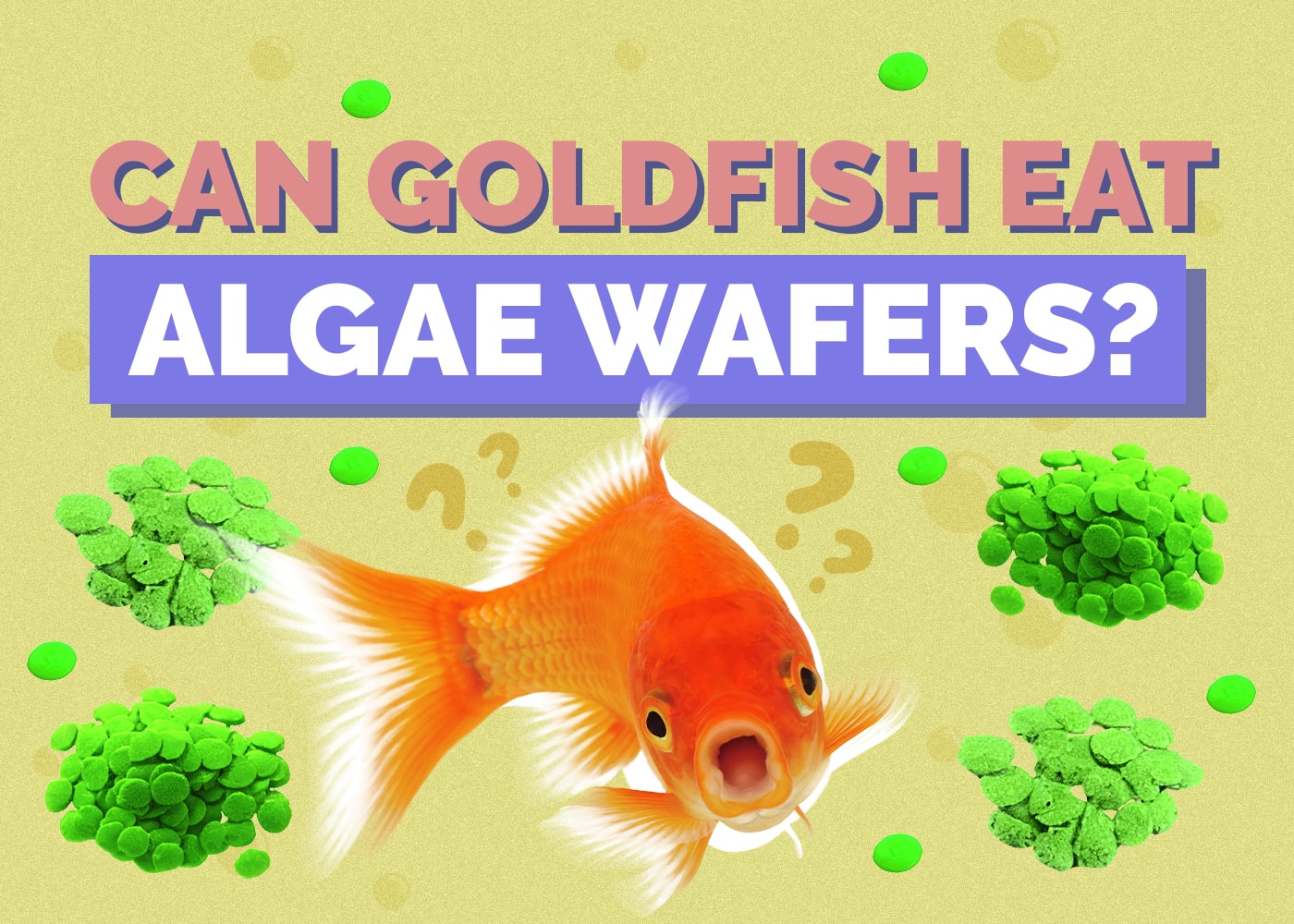7 Best Goldfish Antibiotics for Different Diseases in 2024 – Reviews & Top Picks

Updated on
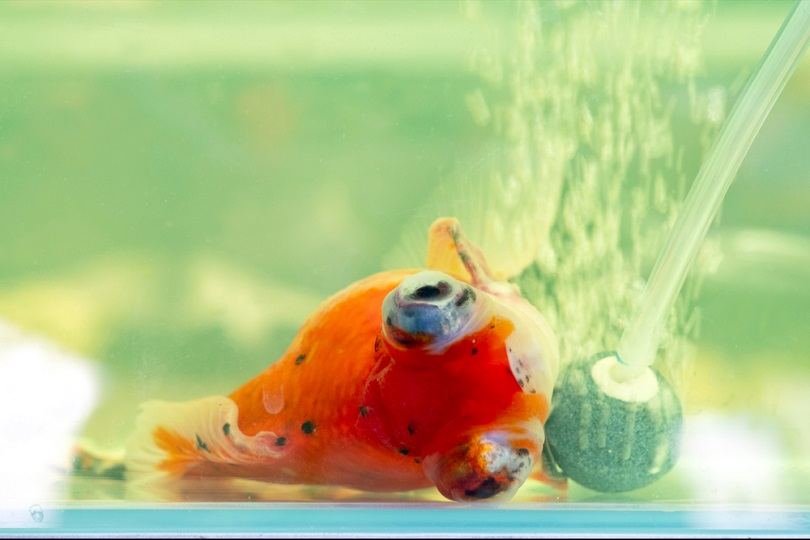
Keeping goldfish is usually a pretty laid-back, enjoyable hobby. However, goldfish can get sick just like any other animal and it can be confusing trying to sort through all the products on the market to find the right antibiotic. In fact, it can be confusing to even identify what products actually contain an antibiotic.
We’ve put together these reviews of the 10 best goldfish antibiotics to help you have a better idea of what products are available, what they treat, and what products contain antibiotics. Having this knowledge will help you be a better, more well-prepared fish keeper.
Keep in mind that different antibiotics treat different diseases, so the number 1 product on this list isn’t necessarily the best option for treating all diseases.
A Quick Comparison of Our Favorites in 2024
| Rating | Image | Product | Details | |
|---|---|---|---|---|
| Best Overall |

|
Fish Aid Antibiotics Cephalexin Capsules |
|
Check Price |
| Best Value |

|
Fish Aid Antibiotics Amoxicillin Capsules |
|
Check Price |
| Premium Choice |

|
Seachem MetroPlex |
|
Check Price |

|
Fish Aid Antibiotics Ciprofloxacin Tablets |
|
Check Price | |

|
Seachem KanaPlex |
|
Check Price |
The 7 Best Goldfish Antibiotics for Different Diseases
1. Fish Aid Antibiotics Cephalexin Capsules – Best Overall
| Active Ingredients: | Cephalexin |
| Diseases Treated: | Non-specific infections |
| Number of Doses Required: | 5–10 |
| Invertebrate Safe: | Yes |
Fish Aid Antibiotics Cephalexin Capsules are available in 250 mg and 500 mg dosages and can be purchased in bottles of 30 capsules or 100 capsules. This medication is very cost-effective for tanks of all sizes and is a broad-spectrum antibiotic used to treat non-specific infections that are caused by gram-positive or most gram-negative bacteria. This is a good option if you are unsure of the infection your fish has or if another antibiotic has not shown improvement.
This medication is administered by dissolving the contents of the capsules into the tank water. The recommended dosage is 250 mg for every 10 gallons of water. It’s used for 5–10 days and the manufacturer recommends discontinuing use if you don’t see improvements after 5 days.
- Treats gram-positive and gram-negative bacteria
- Cost-effective for small and large tanks
- Two dose sizes available
- Two bottle sizes available
- Doesn’t tint the water
- May see improvements in as little as 5 days
- Partial water changes required between doses
- May be difficult to know when to use
2. Fish Aid Antibiotics Amoxicillin Capsules – Best Value
| Active Ingredients: | Amoxicillin |
| Diseases Treated: | Dropsy, fin rot, red pest |
| Number of Doses Required: | 5–10 |
| Invertebrate Safe: | Yes |
Fish Aid Antibiotics Amoxicillin Capsules are available in 250 mg and 500 mg dosages in bottles of 30 capsules, 60 capsules, and 100 capsules. The recommended dosage of this medication is 250 mg for every 10 gallons and you should open the capsule and add it to your tank water. This medication leaves a yellow tint in the water and partial water changes should be performed between doses. Amoxicillin treats all gram-positive and some gram-negative bacteria, including pseudomonas and aeromonas.
This medication can be used to treat dropsy, red pest disease, and fin rot, as well as many other conditions. It’s recommended to use the appropriate dose for a minimum of 5 days but no longer than 10 days. If improvements aren’t seen after 5 days, the manufacturer recommends discontinuing the treatment.
- Treats gram-negative and gram-positive bacteria
- Two dose sizes available
- Three bottle sizes available
- May see improvements in as little as 5 days
- Cost-effective for small and large tanks
- May tint water yellow
- Partial water changes required between doses
3. Seachem MetroPlex – Premium Choice
| Active Ingredients: | Metronidazole |
| Diseases Treated: | Hexamita, ich |
| Number of Doses Required: | 2–10 |
| Invertebrate Safe: | Usage specific |
Seachem Metroplex is a great antibiotic that the manufacturer states invertebrates may be sensitive to when added to the water. It’s a powder available in one vial size that includes a small scoop for measurements. The dosing is 1–2 scoops for every 10 gallons, but this can also be added to food for fish that are still eating. This medication is extremely bitter, so many fish may refuse to eat it if mixed into medicated food. If dosed in food, invertebrates do not have to be removed from the tank.
This medication can be dosed every 48 hours for up to 3 weeks and a vial can treat a 10- or 20-gallon tank for the full dosing schedule. It’s effective against gram-negative and gram-positive bacteria, as well as protozoa like ich.
- Effective against gram-negative and gram-positive bacteria
- Can treat bacterial and protozoal infections
- Can be added to tank water or used in medicated food
- Safe for invertebrates when added to medicated food
- Can see improvement within 2 doses but can be used up to 3 weeks
- Doesn’t tint water
- Only one size available
- Not cost-effective for large tanks
- Should not be added to water if invertebrates present
- Extremely bitter taste
4. Fish Aid Antibiotics Ciprofloxacin Tablets
| Active Ingredients: | Ciprofloxacin |
| Diseases Treated: | Fin rot, black patch necrosis, furunculosis |
| Number of Doses Required: | 5-7 |
| Invertebrate Safe: | Yes |
Fish Aid Antibiotics Ciprofloxacin Tablets are available in 250mg and 500mg tablets and comes in a bottle of 30 tablets. This antibiotic is used by dissolving the tablet in water before adding to the tank and then adding the antibiotic water to a hospital tank once the tablet is fully dissolved. It’s not recommended to add this medication to your regular tank.
Dissolve 250 mg for every 1–2 gallons of tank water and use it as a bath for your sick fish for 1 hour, then perform a full water change. This medication is used for 5–7 days. It does not tint the water and treats all gram-positive and most gram-negative bacteria, including aeromonas, furunculosis, and columnaris infections like fin rot.
- Treats gram-negative and gram-positive bacteria
- Two dose sizes available
- Doesn’t tint the water
- May see improvements in as little as 5 days
- Cost-effective when used properly
- Should only be used in a hospital tank as a bath
- Full water change required between doses
- One bottle size available
If you suspect your fish is sick and want to ensure you provide the right treatment, we recommend that you check out our best-selling and comprehensive book The Truth About Goldfish on Amazon today. It has entire chapters dedicated to in-depth diagnoses, treatment options, a treatment index, and a list of everything in our fishkeeping medicine cabinet, natural and commercial (and more!)
5. Seachem KanaPlex
| Active Ingredients: | Kanamycin |
| Diseases Treated: | Dropsy, pop eye, septicemia, fin rot |
| Number of Doses Required: | 3 |
| Invertebrate Safe: | Usage specific |
Seachem KanaPlex is a powerful antibiotic that can treat both bacterial and fungal infections. It is only available in one bottle size that holds 0.18 ounces of medication. It can be added directly to the tank water, but this is not recommended for tanks with invertebrates. In tanks with invertebrates, the manufacturer recommends adding the medication to a food mixture.
It is well-absorbed through skin and gills when added to the water for situations where the fish is refusing food. For both uses, the manufacturer recommends using for no more than 3 days. Long-term use of this medication can lead to liver damage in your fish. It is a powder that includes a small scoop and is dosed at a scoop for every 5 gallons of water.
- Powerful antibiotic
- Can treat fungal and bacterial infections
- Can be added to tank water or used in medicated food
- Safe for invertebrates when added to medicated food
- Well-absorbed through skin and gills from water
- Should see improvement within 3 days
- Doesn’t tint water
- Only one size available
- Not cost-effective for large tanks
- Partial water change required between doses
- Should not be added to water if invertebrates present
- Long-term use can lead to liver damage
6. API E.M. Erythromycin
| Active Ingredients: | Erythromycin |
| Diseases Treated: | Cotton wool disease, skin lesions, bacterial gill disease |
| Number of Doses Required: | 4 |
| Invertebrate Safe: | Yes |
API E.M. Erythromycin is effective against gram-positive bacteria, as well as some gram-negative bacteria and fungi. This medication comes in a box of 10 packets and a 30-ounce bottle, making this a cost-effective option for small and large tanks. For the packets, this medication is added directly to the tank water and is dosed with a packet for every 10 gallons of water. A 25% water change is recommended between the second and third doses and 24 hours after the fourth dose.
It can be used in conjunction with some other medications if needed. It won’t discolor your tank water. This antibiotic is relatively weak compared to some other options, so it may be ineffective against moderate to severe infections.
- Effective against gram-positive and some gram-negative bacteria
- Available in two package sizes
- Cost-effective
- Can be effective against some fungi
- Can be used with other meds if needed
- Won’t discolor tank water
- Requires multiple water changes
- Weak compared to some other antibiotics
- If no improvement within 4 days, then a different med is needed
7. Fritz Aquatics Maracyn Two
| Active Ingredients: | Minocycline |
| Diseases Treated: | Fin rot, pop eye, dropsy, septicemia, secondary infections |
| Number of Doses Required: | 5–7 |
| Invertebrate Safe: | Yes |
Fritz Aquatics Maracyn Two is an antibiotic that is effective against gram-negative bacteria but will not treat gram-positive bacteria. It comes in a box of 24 small packets of medication. The initial dose is two packets for every 10 gallons and then 1 packet for every 10 gallons for each subsequent dose for 5–7 days. This medication is on the pricey side and isn’t cost-effective for most tanks, but it is effective for some hard-to-treat infections.
It’s added directly into the tank water and does not require water changes between doses. It also will not discolor your tank water. After the full dosing schedule is complete, a water change should be performed.
- Treats gram-negative bacteria
- Easy to dose packets
- Does not require water changes between doses
- Doesn’t tint water
- Not cost-effective
- Only available in one pack size
- Not effective against gram-positive bacteria
- Water change should be performed after completion of dosing
Buyer’s Guide – Choosing the Best Goldfish Antibiotics
- Fin/Tail Rot: Often caused by pseudomonas bacteria, fin rot can also be caused by a fungus. It’s characterized by fins with jagged edges, redness, and discoloration. Rule out fin nipping and bullying before treating for fin rot.
- Septicemia: Caused by various types of bacteria, septicemia is a bacterial infection that has become systemic by entering the bloodstream. It often starts with an open wound or another infection that decreases immunity. It can be deadly and lead to multi organ failure. Hemorrhagic septicemia is caused by a contagious viral infection, but some antibiotics may be effective against it. It can be characterized by red streaks on skin and fins, lethargy, inappetence, and another infection that isn’t improving.
- Pop Eye: Pop eye in fish is usually caused by an injury, like hitting the eye against a sharp object in the tank. It can be caused by bacterial infections, but usually, antibiotics are used to prevent an infection through the open eye socket while it heals over. Pop eye is characterized by a missing eye or eyeball dangling from the socket.
- Dropsy: Dropsy is a systemic infection that is the body’s response to other medical problems. Infections can lead to fluid collections outside of the blood vessels, often causing it to pool in the abdomen. Fish with dropsy will have swollen, abnormally rounded bellies and dropsy is characterized by pineconing, which means the fish has become bloated enough for the scales to push out from the body, causing the fish to look like a pinecone.
- Eye Cloud: Eye cloud is sometimes caused by injury, but if both eyes are affected then it is likely caused by a bacterial infection. Eye cloud is characterized by a white film or cloudiness in or on the eyes.
- Bacterial Gill Disease: BGD can be caused by an overgrowth of naturally present bacteria in the gills, but it can also be caused by external bacteria. It often leads to swelling or abnormal shaping of the gills, and even can lead to the gills fusing closed.
- Hexamita: Hexamita, also known as Hole in Head Disease, isn’t caused by a bacterium but can be treated with some antibiotics. Hexamita is a protozoal infection that causes a deep open wound to develop on the face or head.
- Ich: Not a bacterial infection, ich is one of the most common diseases seen in aquarium fish. It’s caused by a parasite that latches onto the fish’s scales. The parasites will drop from the fish to reproduce in the water. They will then free swim until they find a host. Some antibiotics are effective against this parasite.
- Tank Size: If you have a large tank, it may be far more cost effective for you to use a hospital tank while treating your fish. This will save you money by allowing you to use significantly less medication than you would if you needed to treat an entire large tank. If multiple fish in your tank are showing symptoms of illness, though, then you should treat the entire tank.
- Aquarium Residents: Some medications aren’t safe for invertebrates, like shrimp and snails, so make sure anything you use is safe for your invertebrates. Sometimes, you can temporarily keep your invertebrates in another tank, but you’ll need to ensure the medication is fully cleared from the tank before adding them back to the main tank.
- Symptoms: If your fish is sick, try to make a list of all of the symptoms you are seeing, then search these symptoms or call your vet to narrow down the diagnosis. Some antibiotics will work much better for some illnesses than others, so the better you can narrow down the illness itself, the more effective treatments you’ll be able to choose.
Conclusion
The top three antibiotics for your goldfish are Fish Aid Antibiotics Cephalexin Capsules, Fish Aid Antibiotics Amoxicillin Capsules, and Seachem MetroPlex. These medications tend to be the most effective of these product reviews with the fewest cons, but they are not effective for all illnesses. Narrow down your fish’s symptoms to choose the best course of action, then change up the medication if no improvements are noted. If needed, you can always reach out to a fish or agricultural veterinarian near you who may be able to help you narrow down a diagnosis and recommend the best course of treatment.
Featured Image Credit: mrk3PHOTO, Shutterstock




